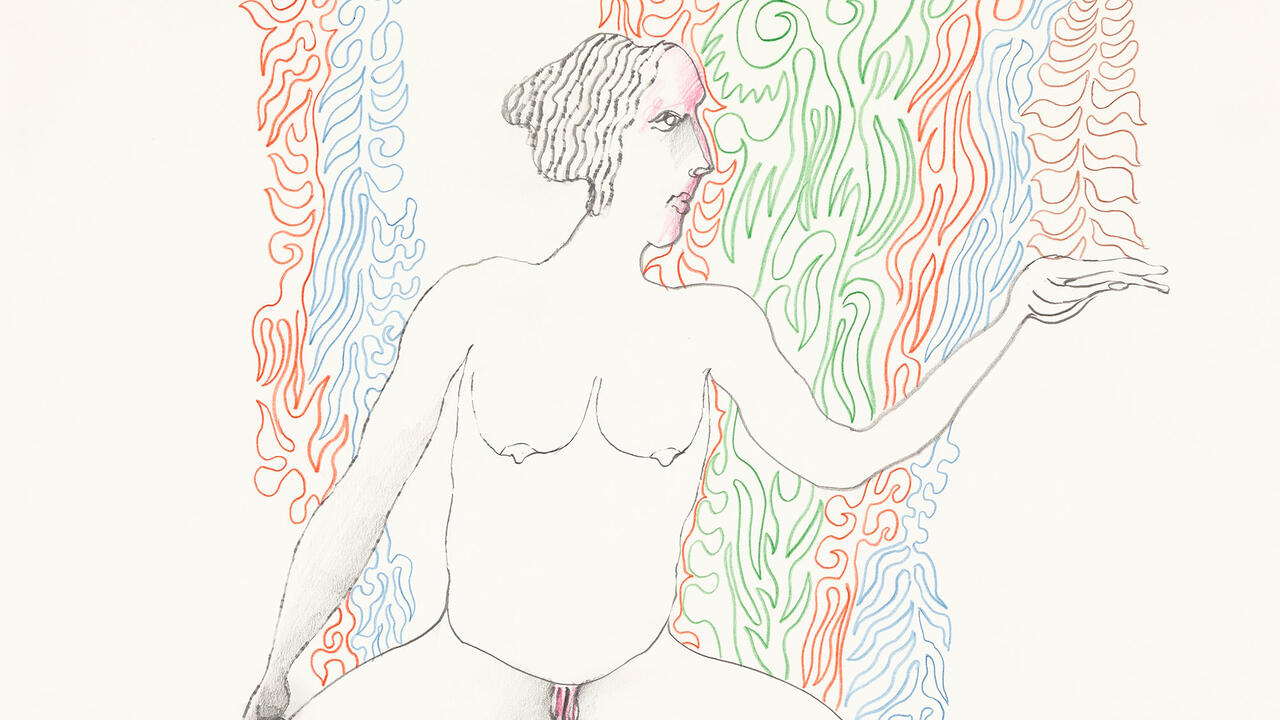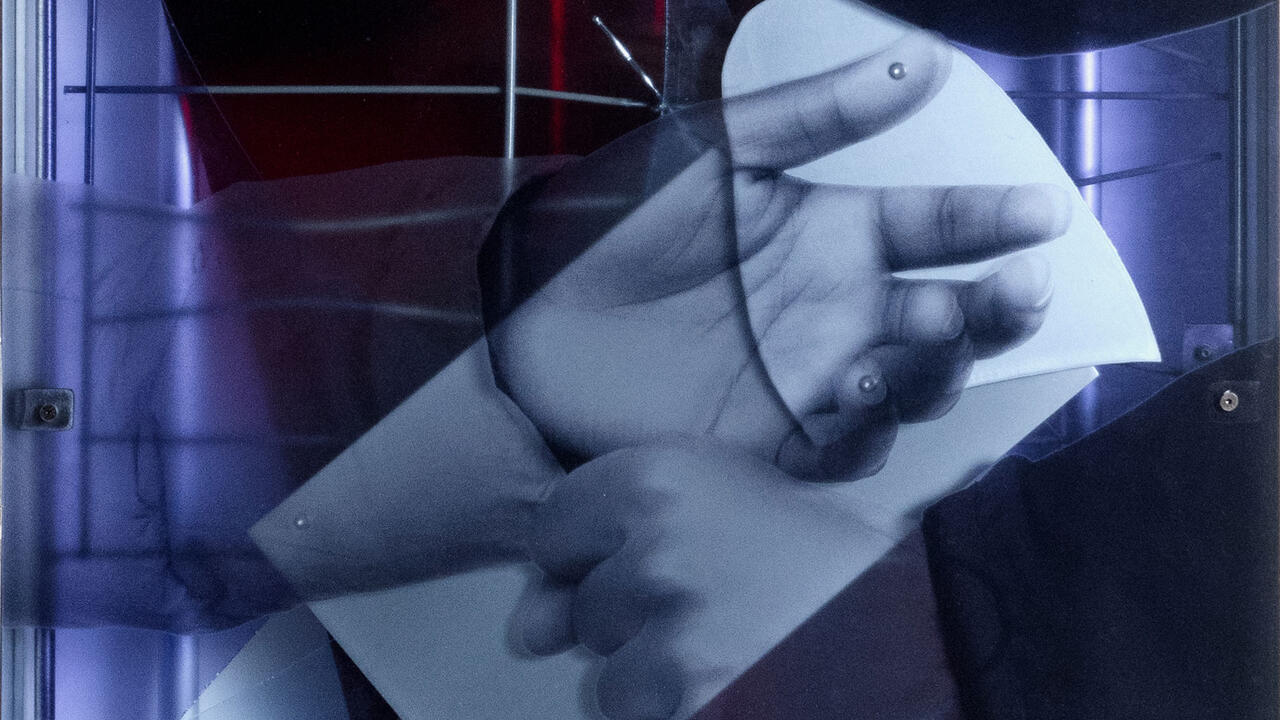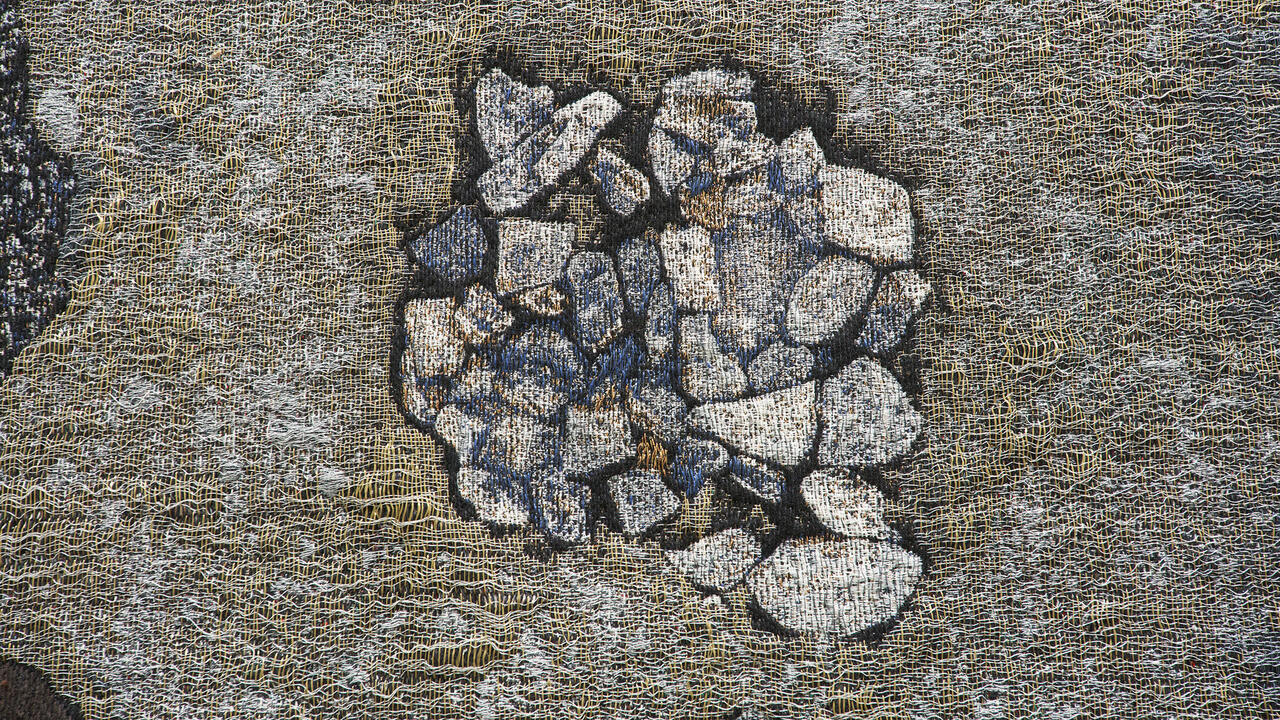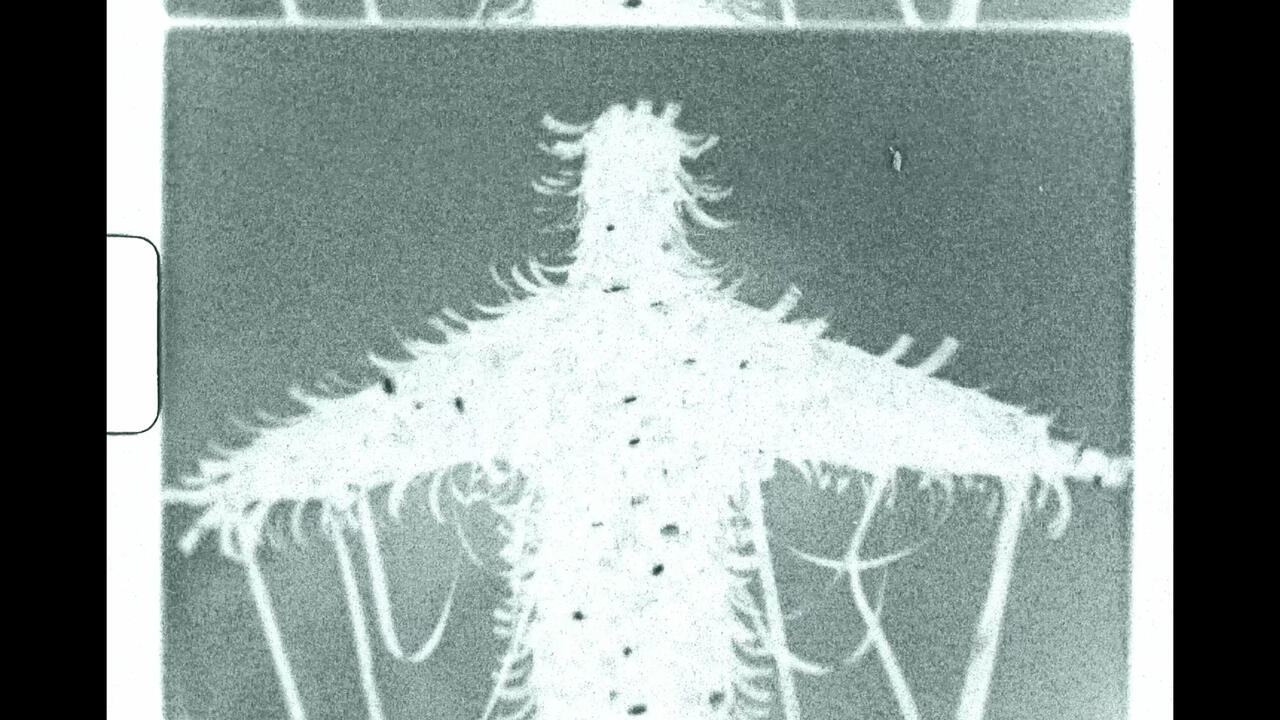The 17th Lyon Biennale Gets Personal
After an election dominated by far-right rhetoric, curator Alexia Fabre’s eclectic network of artists presents an inclusive vision of French culture
After an election dominated by far-right rhetoric, curator Alexia Fabre’s eclectic network of artists presents an inclusive vision of French culture

The 17th Lyon Biennale kicked off at the end of September to great pomp. As guest curator Alexia Fabre announced to a crowd of journalists, this year’s edition is informed by ideas of personal relations, altruism and welcoming the other – vague but not irrelevant topics given how close France came to electing the far-right National Rally Party in July of this year.
Among the most memorable works in the Grandes Locos – a former train-repair depot which serves as the biennial’s main site – is Gözde İlkin’s The Majority of Accent (2018–24), a mixed-media work in which the artist’s characteristic biomorphic figures are painted and embroidered onto the surface of a large textile print of a quarry. The work evokes the venue’s industrial past via images of labour organizing, accompanied by recorded interviews with former workers emitted from speakers hidden in printed, painted and embroidered sacks.

At the other end of the city, the Lyon Museum of Contemporary Art (macLYON) presents talents including Lyz Parayzo, a recent graduate of École nationale supérieure des Beaux-Arts de Paris, whose installation Cuir Mouvement (Leather Movement, 2022) cites Lygia Clark’s sculptural series Trepantes (Climbers, c.1963–65) and Obra mole (Soft Work, c.1960s). In Parayzo’s reimagining, Clark’s spindly, jellyfish-like forms in thin sheets of metal or rubber are enlarged monumentally, given metallic spikes and motorized to rotate in space. The effect is both spellbinding and dangerous – I watched the biennial staff scramble to keep visitors away from the whirling blades – reflecting the beauty and peril of transgender life in the artist’s native Brazil.
Also conveying the conditions of endangered communities is Taysir Batniji, whose installation spread across two rooms at macLYON is almost a mini retrospective. His most jarring and impactful work displayed here is Just in case #2 (2024), one of an ongoing series comprising photographs of the keys to more than 200 Palestinian homes that no longer exist, having either been destroyed by airstrikes or forcibly appropriated by settlers.

In Shivay La Multiple’s installation À la recherche du fruit ligneux, aux confluences des eaux (In Search of Woody Fruit, Where the Waters Meet, 2024), presented just outside Lyon’s eastern limits at the Institute of Contemporary Art, videos are projected onto a wallpaper backdrop of rippling water and surreal emoji assemblages. In this total work of art, which also features delicate stained glass and sculptural collages either ceiling-hung or perched on wall-mounted pedestals, the artist deploys digital technologies at the service of a complex yet coherent mythos, drawing on non-western oral storytelling traditions to create spiritual and symbolic connections between South America, Europe and Africa.

In citing personal relations as one of the guiding concepts of the 17th Lyon Biennale, Fabre was presumably alluding to the fact that a preponderance of the participating artists are either former graduates from the Beaux-Arts de Paris, where Fabre is currently director, or represented in the collection of the Musée d’art contemporain du Val-de-Marne, of which she was the founding director. Fortunately, Fabre’s taste in artists is interesting and eclectic, showcasing the ways in which the French art scene has internationalized in recent years. The Lyon Biennale launched in 1985, during a period when the governing Socialist Party sought to decentralize France’s art scene from its capital city. This year’s edition represents a continuation of this fight for a cultural world that values richness and difference. There is also plenty of beauty.
The 17th Lyon Biennale, 'Les voix des fleuves' (Crossing the Water), is on view until 5 January 2025
Main image: Gözde İlkin, The Majority of Accent (detail), 2018–2024, painting on textile, embroidery and seeds on printed fabric, 4.8 × 2.9 m. Courtesy: the artist





















